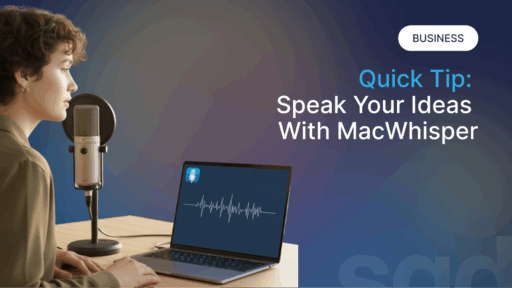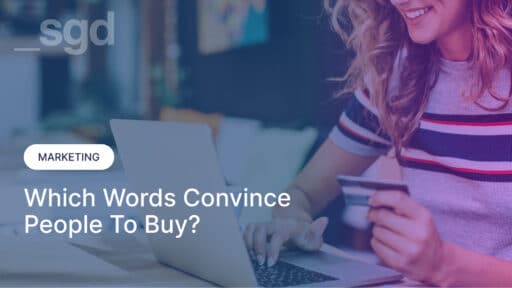If you run an eCommerce store, you know the growth game can feel never-ending. You tweak ads, chase trends, launch new products, and still wonder why profits don’t grow as fast as your workload.
The truth is, most stores don’t need more traffic or bigger budgets. What they need is a clear and structured approach to growth.
That’s where the 7 Levers Framework comes in.
Created by Australian entrepreneur Pete Williams, this model breaks your business into seven simple levers you can control and improve.
By lifting each one by just 10 percent, you can almost double your profit – without doubling your effort.
At SGD, we use the 7 Levers Framework framework to help Shopify and WooCommerce stores grow consistently and sustainably.
In this guide, you’ll learn how to apply it to your own eCommerce business, with practical examples and real results from Australian brands we’ve helped.
Key points
- Most eCommerce businesses chase growth in the wrong areas
- The 7 Levers Framework gives you structure and focus
- A 10% improvement in each lever can nearly double profit
- You’ll see how to apply this method to traffic, conversions, and repeat sales
What Is the 7 Levers Framework?
Growing an eCommerce store often feels like juggling a dozen disconnected metrics: traffic, conversion rates, average order value, repeat purchases, shipping costs, and more.
The 7 Levers Framework simplifies all that complexity into seven measurable areas that directly drive profit.
These levers represent the entire customer journey, from first-time visitors to loyal repeat buyers:
- Suspects: The people who become aware of your business (your website traffic)
- Prospects: Visitors who show real interest, like adding to cart or signing up
- Conversions: The percentage of prospects who make a purchase
- Average Item Value: The average dollar value of products sold
- Items per Sale: The number of products purchased per transaction
- Transactions per Customer: How often each customer buys again
- Profit Margin: The percentage of revenue you keep after costs
Together, these seven levers form a complete system for understanding and improving business performance.
Every marketing tactic, operational change, or website tweak affects at least one of them.
Why It Matters for eCommerce Stores
Most store owners spend all their energy chasing more traffic or running new ad campaigns. But without improving what happens after someone lands on your site, extra website visitors don’t always lead to profit.
By focusing on small, measurable improvements across these seven areas, you can build sustainable, compounding growth.
This is the beauty of the framework – it turns messy, unpredictable marketing into a simple, data-driven plan.
A 10 percent lift in each lever doesn’t sound dramatic, but when compounded across seven areas, it can almost double your profit.
It’s a mindset shift from “big short term wins” to consistent wins, where every small improvement multiplies your results.
How the Framework Works
Think of the 7 Levers as gears in a machine. When each gear turns a little faster, the whole system accelerates.
Here’s the math behind it: If you improve each of the seven levers by just 10 percent, the combined effect is roughly a 95 percent increase in profit.
That’s because the improvements multiply rather than add.
For example, increasing website traffic by 10 percent, conversion rate by 10 percent, and average order value by 10 percent creates a compounding effect where every gain amplifies the next.
This approach makes growth predictable and measurable. Instead of gambling on one big campaign, you can test, measure, and scale multiple small improvements across your store.
The 7 Levers of eCommerce Growth
Now that you understand how the 7 Levers Framework works, the next step is applying it to your own eCommerce store.
Each lever represents an opportunity to fine-tune a part of your business, not by overhauling everything at once, but by making small, smart adjustments that compound over time.
Let’s start at the top of the funnel with your first lever: Suspects, the people who discover and visit your store.
1. Suspects: Attracting Qualified Traffic
Goal: Bring more of the right visitors to your store.
Traffic is the fuel for every online business, but not all visitors are equal. A thousand new shoppers who never buy are less valuable than a hundred who are ready to purchase.
How to improve this lever:
- Target intent, not volume. Use Google Shopping and Meta Ads campaigns built around high-intent keywords such as “buy”, “order”, or “same-day delivery”.
- Invest in SEO for your category pages. Optimise titles and meta descriptions around specific buyer searches (e.g., “eco-friendly candles Melbourne”).
- Leverage local visibility. Partner with complementary Australian brands, influencer accounts, or local directories that send qualified referral traffic.
- Use helpful content as entry points. Blog posts, buying guides, and comparison pages capture visitors earlier in their journey.
Your 10% Win: Identify your top-performing traffic source and improve its click-through rate by ten percent. That could mean refining ad copy, adding product schema, or improving meta descriptions.
2. Prospects: Turning Visitors into Leads
Goal: Encourage more visitors to take an action that signals genuine interest.
In a retail store, a customer who asks a question or tries a product is more likely to buy. Online, these actions are email signups, quiz completions, or adding an item to the cart.
How to improve this lever
- Offer value for data. A first-order discount or entry into a monthly giveaway encourages visitors to share contact details.
- Use smart pop-ups or quizzes. Help shoppers find the right product, then follow up with tailored recommendations.
- Simplify forms. Ask only for essential details, then nurture new subscribers with an automated welcome series that builds trust.
Your 10% Win: Improve the conversion rate of your signup forms. Even a small increase in subscribers compounds into more sales opportunities later.
3. Conversions: Turning Prospects into Customers
Goal: Increase the percentage of engaged visitors who complete a purchase.
This lever is about trust, clarity, and simplicity. A faster, more confident checkout process directly drives profit.
How to improve this lever
- Optimise product pages. Use crisp imagery, detailed specs, and concise benefit-driven copy.
- Add trust elements. Show reviews, social proof, and secure-payment icons near the call-to-action.
- Streamline checkout. Offer one-page checkout, guest purchase, and express payment options like Apple Pay or Shop Pay.
- Recover abandoned carts. Send automated emails or display retargeting ads reminding shoppers to complete the order.
Your 10% Win: Track your checkout-completion rate and test one small improvement, such as clearer shipping info or fewer form fields.
Learn more about essential features of eCommerce stores.
4. Average Item Value: Selling Smarter, Not Just More
Goal: Increase the average price of items sold.
Raising prices isn’t always necessary. The key is presenting higher-value options that genuinely meet customers’ needs.
How to improve this lever
- Create premium editions or bundles. Offer exclusive colours, materials, or packaging for a slightly higher price.
- Use price anchoring. Display the regular price next to a discounted or “compare-at” figure to highlight value.
- Personalise recommendations. Train customer-service staff or live-chat agents to suggest better-suited products during order checks.
Your 10% Win: Add one higher-value variant or bundle to your top-selling product and test its uptake rate.
5. Items per Sale: Increasing Basket Size
Goal: Encourage each customer to buy additional complementary products.
Cross-selling works because convenience wins. When related items appear naturally, shoppers see them as helpful rather than pushy.
How to improve this lever
- Display “frequently bought together” products. Automate this through your platform or manually curate complementary items.
- Offer free shipping thresholds. “Spend $100 for free delivery” motivates larger baskets.
- Bundle essentials. Combine products that naturally go together. For instance, skincare sets or safety gear kits.
Your 10% Win: Review your top-selling products and attach one cross-sell suggestion to each.
6. Transaction Frequency: Driving Repeat Purchases
Goal: Encourage existing customers to buy again sooner.
Returning buyers spend more and cost less to acquire. This lever builds reliable, predictable revenue.
How to improve this lever
- Automate follow-up communication. Send personalised reorder reminders or usage tips based on purchase dates.
- Introduce subscriptions or loyalty programs. Reward repeat purchases with points or automatic refills.
- Run seasonal campaigns. Use customer data to tailor promotions for events or weather-based needs.
Your 10% Win: Build one post-purchase automation that invites the customer back within 30 days.
7. Profit Margin: Maximising Every Sale
Goal: Improve profitability without sacrificing quality or service.
A stronger margin gives you flexibility to reinvest in growth. Small operational efficiencies often make a bigger difference than cutting prices.
How to improve this lever
- Negotiate smarter supplier deals. Ask for tiered discounts or rebates based on volume targets.
- Focus ad spend on high-margin products. Review campaigns monthly and pause low-return items.
- Streamline fulfilment. Use automation tools to reduce handling time and packaging waste.
- Refine your product range. Retire low-margin SKUs that drain attention and storage space.
Your 10% Win: Review your top-selling product margins and renegotiate at least one supplier contract for better rates.
Why Small Wins Work
Each lever connects to the next. Improving one enhances the impact of the others.
A ten-percent lift in traffic, combined with a ten-percent improvement in conversion rate and order value, quickly compounds into far greater profit growth.
This “compounding advantage” means you don’t need a single breakthrough. You just need consistent, measurable progress.
It’s the same principle Pete Williams calls 10 Percent Wins, and it’s central to every website growth plan we create for clients at SGD.
Applying the 7 Levers Framework
The 7 Levers Framework turns vague goals like “grow sales” into specific, controllable actions.
Start by measuring where you are, then focus on one lever at a time. Each small improvement builds momentum and confidence for the next.
At SGD, we use this exact framework inside to drive growth for our ecommerce store clients.
We help eCommerce businesses identify which lever will have the biggest immediate impact, then design simple steps to achieve measurable 10 percent wins.
When you see how these levers interact, growth stops feeling like guesswork. It becomes a clear, systematic, and empowering process your whole team can get behind and contribute to.
Next Steps: Grow Your Ecommerce Store
Ready to uncover your biggest growth opportunities with the 7 Levers Framework?
Book a Digital Strategy Workshop with our team. Together, we’ll apply the 7 Levers Framework to your ecommerce store, identify quick wins, and create a roadmap for sustained profit growth.
Small improvements, multiplied over time, lead to big results.
References
- Williams, Pete. How to Dramatically Accelerate Growth With 10% Wins, LinkedIn, 2019.
- Williams, Pete. Cadence: A Tale of Fast Business Growth, 2018.
FAQs
Traffic, prospects, conversions, average item value, items per sale, transaction frequency, and profit margin. These are the seven measurable drivers that influence profit.
Because gains in each area multiply. A ten-percent lift across all seven levers can almost double total profit through compounding.
Start with the easiest to measure. For many stores, that’s conversions or average order value. Quick wins here build momentum for the others.
Yes. Both platforms provide the analytics and integrations needed to track and optimise each lever, from traffic to repeat purchases.
SGD uses the 7 Levers Framework inside our Digital Strategy Workshops and ecommerce website design to pinpoint your next 10 percent win and turn it into sustained growth.









